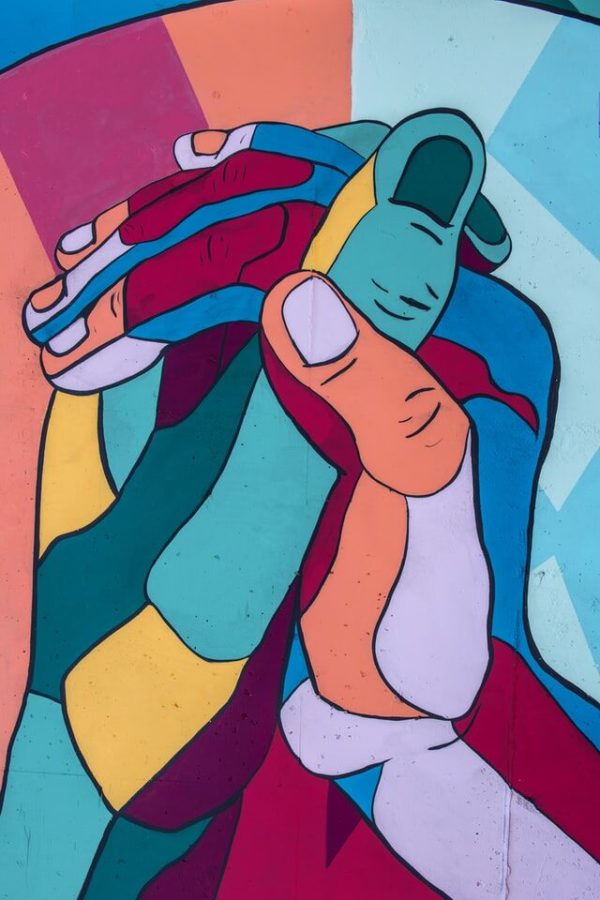Exposing biases pt. 2: students speak out and how to make a change
According to Jidong Sun, what truly matters is what an individual does with their biases towards others.
December 7, 2021
The concept of bias is a widely prevalent and harmful behavior that has negatively affected members of the Iowa State community. Students of various backgrounds have found themselves the victim of mistreatment based on preconceptions of their race, gender or cultural upbringing. In a previous Iowa State Daily article regarding bias, different facets of conscious and unconscious bias were explored. Although bias is an ingrained and widespread issue, the willingness to learn about different cultures and lifestyles can be the key to reducing bias shown towards others, according to some members of the student body.
“…Bias can show up among anyone that has different experiences,” Joyce Lai, a senior studying electrical engineering at Iowa State, said.
Lai is also the student advocacy committee director for the International Student Council, as well as a person of East Asian heritage. Because of this, she has been exposed to a wide variety of biases both toward herself as well as international students she has connected with.
“…Because of language barriers, sometimes international students are interpreted as less intelligent because they might not be able to understand the instructions or syntax of the instructions that they’re given,” Lai said.
While international students are not inherently less intelligent than any other student, snap judgments and misinterpretations from instructors can have a tangible detriment to their learning.
“…It affects their ability to learn because everything is taught in English, and even like microaggressions from professors that are also people of color that tell them they just need to learn English and be better at it and like basically, their struggle, their language barrier is not really a valid excuse for anything,” Lai said.
Lai has also experienced bias in her own way. As a person of East Asian heritage, she has also found herself the victim of snap judgments and microaggressions based on her race. Not only has she had her ability to speak English questioned, despite it being her first language, but she also has been subject to typical stereotypes of Asians, such as the concept of a model minority.
According to Lai, “… a lot of people, even people of color from different cultures, will say, ‘You don’t need to study. You don’t really study, you’re just smart.’ Like I get that a lot because I’m East Asian.”
Bias towards unfamiliar cultures is not an isolated incident. Rather, it is ubiquitous for students whose lifestyle or heritage is a minority.
“…When you meet an international student, some people may have a bias about how they would act or behave differently than what’s considered normal for here,” said Jidong Sun, a senior studying computer engineering.
Sun is an international student himself, and he works as the student experience director for the Student Government. He believes that bias is not only an issue of individual perception, but it might also be a systematic problem.
“…Another big challenge, too, about this on the topic of plagiarism, because different countries have different standards of plagiarism…Here in the U.S. and Iowa, we have our own set of standards, but sometimes I feel like that’s not super expressed,” Sun said. “It’s just expected that you know how to cite your sources.”
Discrepancies not only due to different lifestyles but different customs and practices can lead to bias, according to Sun.
Commonly held stereotypes often act as the basis of bias. This transcends just one culture, as people can often construct judgments or beliefs based on their own preconceptions. Alejandra Flores, a Mexican-born student, found herself the victim of judgmental stereotyping.
“I remember very distinctly a woman, older, kind of just said something along the lines of, ‘in America, you need to speak English, and your children are like, you deserve to like go to hell,’ or whatever. It was very, very intense,” Flores said. Despite being a young child, Flores, along with her mother and younger brother, were targeted based on their race and culture.
While bias is a widespread issue, there are ways in which individuals can recognize and correct their own preconceptions. According to Flores, a solution to bias involves getting accustomed to unfamiliar cultures and practices.
“…You can go to seminars, and you can start interacting with people and cultures that you’re not so familiar with…Interacting with culture will help you in a probably very fun way to kind of check your blind spots and grow as a person,” Flores said.
Going to culture-specific restaurants, attending events and listening to lectures are all tips Flores recommends for Iowa State students.
“…Go talk to your dean of multicultural student success,” Flores said. “Those are people whose whole job is to tackle multicultural issues.”
Although forms of bias can have negative effects, it is not something to be ashamed of, according to Sun.
“I think a lot of people think that having bias is a bad thing, which it could be, but I think all of us have bias to a certain degree,” Sun said. “But It’s more about how you kind of deal with your own bias. That’s more important…”







